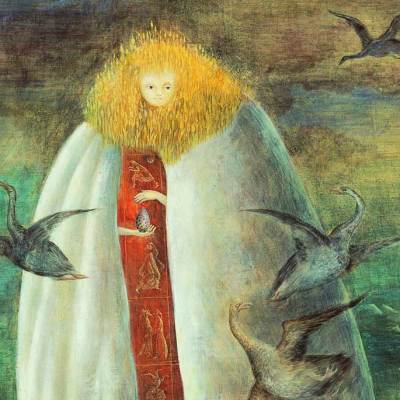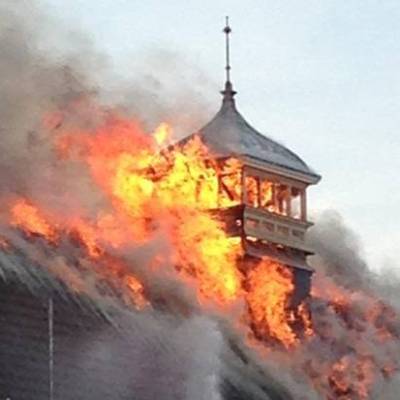Van Gogh’s paintings are among the most widely reproduced and recognisable artworks in the world. But while we may all be familiar with his most famous compositions, the particular qualities that define his painting – his bold palette, the thick impasto of every stroke – are usually lost in reproduction. The Van Gogh Museum Relievo Collection, however, claims to replicate the 19th-century master’s works in their entirety, right down to the details of their original frames. We spoke to Diederick Van Eck (CEO of Tribute International, the company behind the project), about the editions and the questions they raise about the role and value of reproductions in the world of art.
How and why did you end up working with the Van Gogh Museum (VGM) on this project?
We have a long history of collaboration with the museum. After a 22-year career in international banking, I followed my passion and became producer in the entertainment industry. I initiated the successful musical Soldier of Orange, translated the 12 most beautiful works of Van Gogh into music and produced the audio book Van Gogh: Struggle and Success, narrated by Helen Mirren. While putting this all together, I imagined that if Van Gogh were alive today, with his passion and persistence, he would be a rock star. I even started to make plans for an immersive theatre experience around the idea, which we now have in development.
Through all this, I established a close relationship with the Van Gogh Museum, and when the possibility of the Relievo Collection came about, I was thrilled. In the museum you can only enjoy the original paintings for a few minutes, usually with other people around. This collection is the second best option and it spreads the legacy of Van Gogh even further, as the reproduced paintings go to places the originals will never reach.
Could you tell us a bit about how the editions are made?
Initially, the original artwork is scanned by means of a multi-dimensional scanner, recording its exact relief. The three-dimensional scan is then combined with a high-resolution two-dimensional print. Then follows a colour-matching process: this takes two to three months under the supervision of two colour-matchers and a curator. Everything is reproduced as accurately as possible, making use of the highest quality inks and materials.
It is not only the technical background, but also the incredible craftsmanship involved that makes this process so special. VGM experts monitor the entire production process closely, together with specialists from Fujifilm Belgium. With the naked eye you won’t see the difference between the reproduction and the original: even the back and frame are matched. (The frames are hand-made out of rosewood with 17th- and 18th- century moulds, with the traditional colours). The entire production process for this collection took seven years.
Van Gogh’s handling of paint is highly distinctive. Does this lend itself to the process, or make his paintings harder to recreate effectively?
Van Gogh often used an expressive touch and applied various layers of thick paste on the canvas. This makes his work exceedingly well suited for three-dimensional reproduction.
Are other museums interested in following suit? Do you think such enterprises will become widespread?
Yes, they are interested in following suit and many already do. But other methods are not as refined as the Reliefographic technique. The Van Gogh Museum and Fujifilm in Belgium have patented it, and it can only be used by approval of the museum.
And have you encountered any resistance to the project?
Oh yes! New developments always come with critics. But the fact that they are numbered, certified by the museum and therefore collectible, makes people realise how unique these reproductions actually are. You need the originals to make them. And it says a lot that the Van Gogh Museum initiated this process: they believe in it, and follow in Van Gogh’s innovative footsteps, even 125 years after his death.
In a letter to his brother Theo (3 December 1882), Vincent Van Gogh shows that he was open to reproducing his own drawings:
What I wrote to you in my last letter about a plan for making prints for the people is something to which I hope you’ll give some thought one day. I don’t have a fixed plan about this myself as yet, only in order to have it clear in my mind I’ll have things to do relating both to the drawings themselves and to the process of reproduction. But I don’t doubt the possibility of doing something like this, nor its usefulness.
He also produced more than one version of certain paintings (such as the Sunflowers and The Bedroom), which were meant for his family and friends. Artistic reproduction is not new, but the technology has advanced, from lithography, to photography, digital imaging and now three-dimensional modelling and printing. Now, we’re able to discuss the merits of such technologies in the world of art. How wonderful is that?
How do you think this sort of technology is affecting our appreciation of art: does it change the way we think about paintings, and value them?
It is my belief that the more images there are from the original, the more popular a painting and an artist becomes. This is good news for collectors, because it will increase the value of the painting. But there’s more to it than that. The paintings in the Van Gogh Museum are affected by time. Imagine 100 years from now – we will be able to compare the original to these editions, and we will have a record of how they looked a century earlier. Wow!
Diederick Van Eck is CEO of Tribute International. Find out more about the Van Gogh Relievo Collection here.
Related Articles
Versions of Vincent: Axel Rüger speaks to Thomas Marks
Digital Innovation of the Year 2014: Factum Foundation (Fatema Ahmed)
Decorated and Replicated: the Cave of Pont-d’Arc (Maggie Gray)
More than just copies: Brussels’ Plaster Cast Workshop (Ruth Allen)



